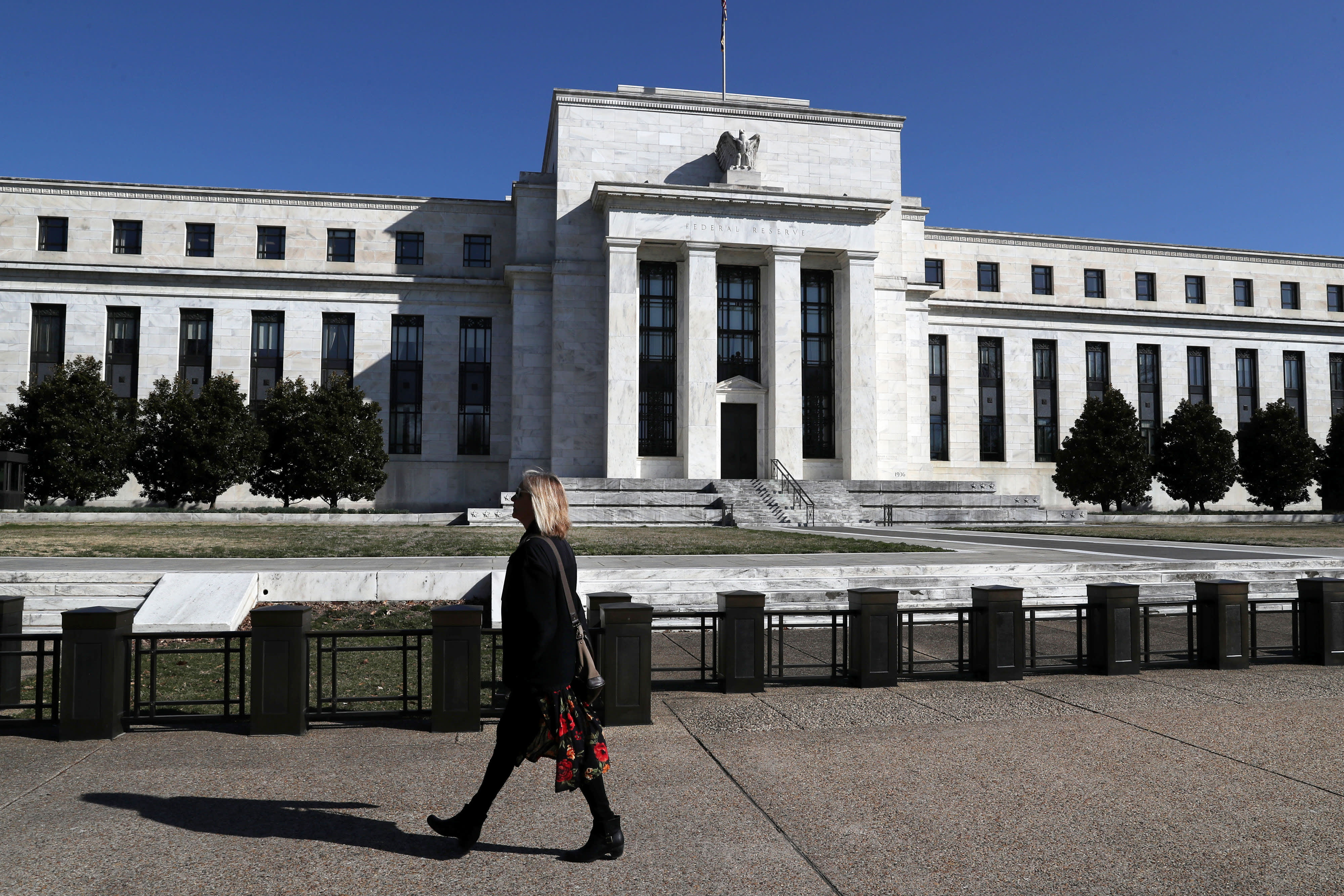A pedestrian walks past the Federal Reserve building on Constitution Avenue in Washington on March 19, 2019.
Leah Millis | Reuters
Federal Reserve economists warn that printing money to pay for deficit spending, as Modern Monetary Theory proponents recommend, has been a disaster for other nations that have tried it.
In a paper that discusses the burgeoning U.S. fiscal debt, Fed experts note that high levels are not necessarily unsustainable so long as income is rising at a faster pace. They note that countries that have gotten into trouble and looked to central banks to bail them out haven’t fared well.
“A solution some countries with high levels of unsustainable debt have tried is printing money. In this scenario, the government borrows money by issuing bonds and then orders the central bank to buy those bonds by creating (printing) money,” wrote Scott A. Wolla and Kaitlyn Frerking. “History has taught us, however, that this type of policy leads to extremely high rates of inflation (hyperinflation) and often ends in economic ruin.”
They cite Weimar-era Germany, Zimbabwe in the 2007-09 period and Venezuela currently. All three faced massive deficits that led to hyperinflation due to money printing.
“An important protection against this type of policy is to create an independent central bank that is insulated from the political process and has clear objectives (such as a specific target for the inflation rate) so that it can make policy decisions to sustain economic health over the long run rather than respond to political pressures,” the economists added.
The paper never specifically mentions Modern Monetary Theory, though it does reference a paper on the movement in a sidebar box on monetary “owls” — as opposed to “hawks” who are against deficits and “doves” who don’t care as much about them. The owls, according to the authors, “suggest that a government that controls a fiat money system is not constrained because it can simply create more money to pay its debts.”
Deficit spending as an investment
Indeed, MMT supporters argue that a country that runs up debts in its own currency can never default, and as long as inflation remains tame, there really are no problems with government deficit spending.
They further say that public spending can be used to stimulate the economy, that essentially a deficit in the public sector can be a surplus in the private sector.
The total federal government debt is just over $23 trillion, or 103.2% of GDP. The total actually held by the public (as opposed to intragovernmental debt) is $17.1 trillion, or 76% of GDP. The government budget deficit was $984.4 billion in fiscal 2019.
The Fed itself has come under criticism for “money printing,” which it did in three rounds of quantitative easing during and after the Great Recession. This came along with keeping its short-term lending rate anchored near zero for seven years. However, the central bank’s stated aims were to bring down long-term interest rates and stimulate economic growth, not to finance the national debt.
“There are ways in which the government can make investments today, that increase deficits today, that produce higher growth tomorrow and build in the extra capacity to absorb those higher deficits,” Stephanie Kelton, professor of public policy and economics at Stony Brook University, said in a video for CNBC.com. “Their red ink becomes our black ink and their deficits are our surpluses.”
Kelton added that deficit spending can be used to fund improvements in education, infrastructure and other inequality-reducing programs without causing long-term damage.
Some of the most prominent advocates for MMT are Democratic presidential candidate Sen. Bernie Sanders and Rep. Alexandria Ocasio-Cortez, both of whom identify as democratic socialists, as well as former Pimco economist Paul McCulley.
Most mainstream economists and Wall Street authorities, however, reject the basis that deficits don’t matter absent inflation.
Bond market guru Jeffrey Gundlach at DoubleLine Capital has called MMT “a crackpot idea,” while former White House economist and Treasury Secretary Larry Summers has labeled it “dangerous.” However, hedge fund king Ray Dalio at Bridgewater Associates said its adoption is “inevitable” amid growing wealth disparity.
